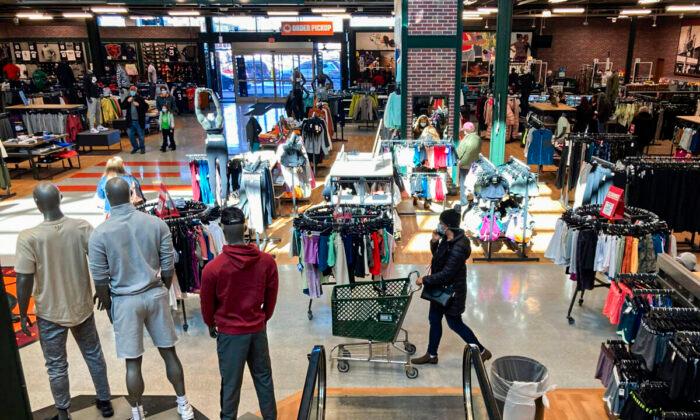U.S. consumer spending was down in the first quarter of 2022, according to revised figures from the U.S. Bureau of Economic Analysis (BEA) on June 29, a sign that the economy is showing signs of weakening growth.
When adjusted for inflation, consumer spending increased by 0.5 percent in the first quarter, well below the previous estimate of 0.8 percent growth, but a slowdown from the 0.6 percent growth in the fourth quarter of 2021.
The government partially blames the unexpected decline in economic activity on the Omicron variant and decreased government assistance payments to individuals, as well as a reduction in forgivable loans to businesses.
Consumer spending, the main driver of the economy, remained solid, especially in the service sector in the first quarter, but rose at a rate significantly less than expected, while spending on retail goods tumbled.
This was in stark contrast to the fourth quarter of 2021, which saw real GDP increase by 6.9 percent—the fastest gain in 40 years, due to a jump in exports.
Spending remained resilient in the last quarter, despite the fastest inflation growth in 40 years, but the latest revisions put the results in a somewhat different light.
Real disposable personal income saw a decline in the first quarter by 7.8 percent, compared with a decline of 4.5 percent in the fourth quarter.
Forecasts
Some economists in recent weeks have lowered their expectations for economic growth for the rest of 2022, and are now admitting the possibility that the economy will continue to contract for the second consecutive quarter—a sign that a recession is taking place.IHS Markit last week, reduced its early June estimate of GDP growth in the second quarter from 2.4 percent to a 0.1 percent annual growth rate.
So far, many economists believe that the United States is outside the scope of what can be defined as a recession, but many consumers are already feeling the signs of stagflation in different parts of the country, as inflation continues to rise.
Meanwhile, a growing number of economists believe that a recession is likely to take place next year.
The S&P Global Ratings report on June 27, put the odds of a recession in 2023 at 40 percent, as the new rate policies by the Federal Reserve to combat inflation increases the probability of low economic growth and the risk of a recession.





